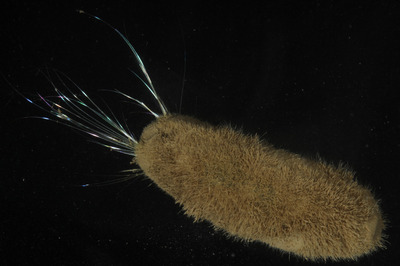Over 30 new species of Antarctic marine life discovered
An international research team has discovered more than 30 new - and so far unclassified - species of Antarctic marine life. After a lengthy categorisation period, their findings have been published in the journal Continental Shelf Research.

The species were found in a 2008 expedition in the Amundsen Sea off Pine Island Bay - one of the least-explored areas of the Southern Ocean - by a team comprising 20 scientists from the UK, Germany, France, Belgium, the USA, Spain and Australia. One such scientist was Dr Jan Strugnell from La Trobe University, who was also part of an international study that last year claimed there may be just one species of giant squid, rather than the 21 previously described species.
Dr Strugnell says the site surveyed by the researchers contains troughs and basins, some more than 1600 m deep, formed during previous ice ages. The Amundsen Sea Embayment is usually covered with sea ice but its extent in summer is declining, which enabled the scientists to reach the continental ice-shelf edge.
“While much oceanographic research reports on ice-shelf decrease, little is known about the fauna that lives there,” noted Dr Strugnell.

The researchers were able to carry out a number of trawls and brought to the surface a total of 5469 specimens from 275 species. Over 30 of these were found to be entirely new species, while several others had not been seen in Antarctic waters before.
The study’s lead author, Dr Katrin Linse of the British Antarctic Survey, said: “Unlike many other seas around Antarctica, the Amundsen Sea shelf was not dominated by large sedentary sponges but instead by mobile echinoderms (starfish, urchins, brittlestars and sea cucumbers) and a community of similar animals which inhabit the on-shelf basins.”

The survey reported that the scientists were “surprised … [by] the extent of the various communities living in the deep troughs. It’s thought they may have taken refuge in them during past periods of glacial expansion.”
Dr Linse said the study “gives us a first insight into the biodiversity of this region and can serve as a baseline to observe future changes”. Furthermore, as the classification of the species is ongoing, she expects that the number new to science will continue to rise.
A simple finger prick can be used to diagnose Alzheimer's
A new study is paving the way for a more accessible method of Alzheimer's testing, requiring...
Experimental blood test detects early-stage pancreatic cancer
The new test works by detecting two sugars — CA199.STRA and CA19-9 — that are...
Biomarkers for dementia vary with time of day
Biomarkers used to diagnose Alzheimer's, including a promising marker for early diagnosis of...




